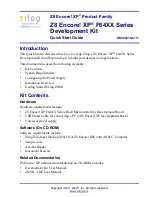
EbV
Product documentation THETA NORM/UNIT
8-8
Activation of modulation
The modulating burner stage is activated when the heat generator temperature has dropped below the
setpoint by more than 1K. The burner is enabled through the burner relay. As soon as the heat generator
temperature exceeds the switch-off line, the burner is deactivated. In contrast to the mixer parameters.
Adjustment
Adjustment to the setpoint is realized through the conventional 2-point output (activating the burner) and an
additional 3-point output for modulating the actuator in the burner. The temperature is registered by the heat
generator sensor. In contrast to mixer control, no end position function is assigned to this actuator. The
control mechanism is running continuously.
Minimum burner run time
Independent of temperature-related switch-off conditions, the burner is kept running for the duration of the
set minimum burner run time.
Minimum and maximum temperature limits
The same functions as for conventional heat generators apply when the heat generator maximum
temperature is exceeded or the heat generator minimum temperature is not reached.
8.1.8.1
Modulation P-band (Xp)
Function:
When the nominal temperature changes abruptly, the proportional band Xp
determines the appropriate readjustment of the respective actuator in the burner
according to the new setpoint.
Example:
At a maximum heat generator temperature of 70°C, the actuator in the
modulating burner must cover a temperature difference of 50K (based on a room
temperature of 20°C). This would correspond to a temperature deviation of 100 %,
meaning that the setting is calculated as follows:
Xp (%)/K x 50K = 100 % or
Xp = 2 %/K
8.1.8.2
Modulation sample time Ta
The sample time is a controller setting that defines the time interval between two subsequent actuator
pulses when a deviation is detected. Shorter sample times result in finer adjustment.
8.1.8.3
Modulation integral action time Tn
The integral action time (= reset time) determines the dynamic behavior of the controller and thus the time
needed by the controller to adjust for a detected deviation from the nominal setting. The reset time is
constant, independent of the size of the deviation.
8.1.8.4
Modulation running time
This function allows adjusting the actuator, with regard to its finite running time, to the control characteristics,
meaning that actuators with different running times react to the same deviation by readjusting by the same
amount through adapting the action times. The integral action time Tn remains unchanged in this. However,
care must be taken that the latter must always exceed the running time of the respective actuator.
Содержание Controller Series
Страница 2: ......
Страница 8: ...EbV Product documentation THETA NORM UNIT VI...
Страница 10: ...EbV Product documentation THETA NORM UNIT 1 2...
Страница 16: ...EbV Product documentation THETA NORM UNIT 2 6...
Страница 18: ...EbV Product documentation THETA NORM UNIT 3 2...
Страница 20: ...EbV Product documentation THETA NORM UNIT 4 2...
Страница 70: ...EbV Product documentation THETA NORM UNIT 5 50...
Страница 78: ...EbV Product documentation THETA NORM UNIT 6 8...
Страница 162: ...EbV Product documentation THETA NORM UNIT 10 10...
Страница 170: ...EbV Product documentation THETA NORM UNIT 11 8...
Страница 192: ...PD_THETA NURS_EbV_GB_0460017001_0612 23...
















































